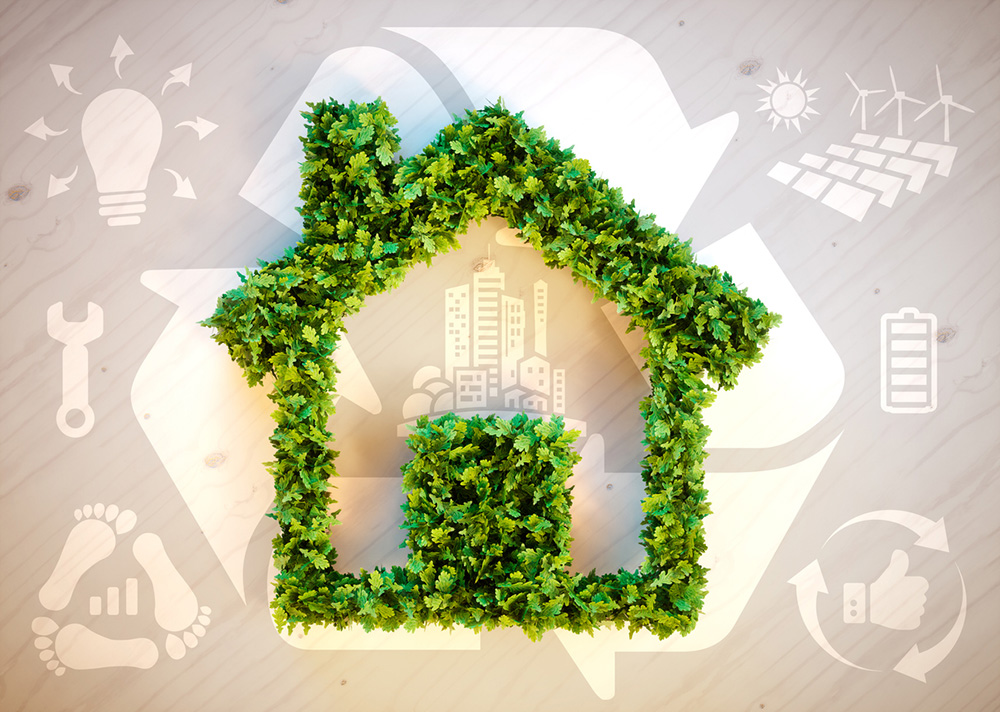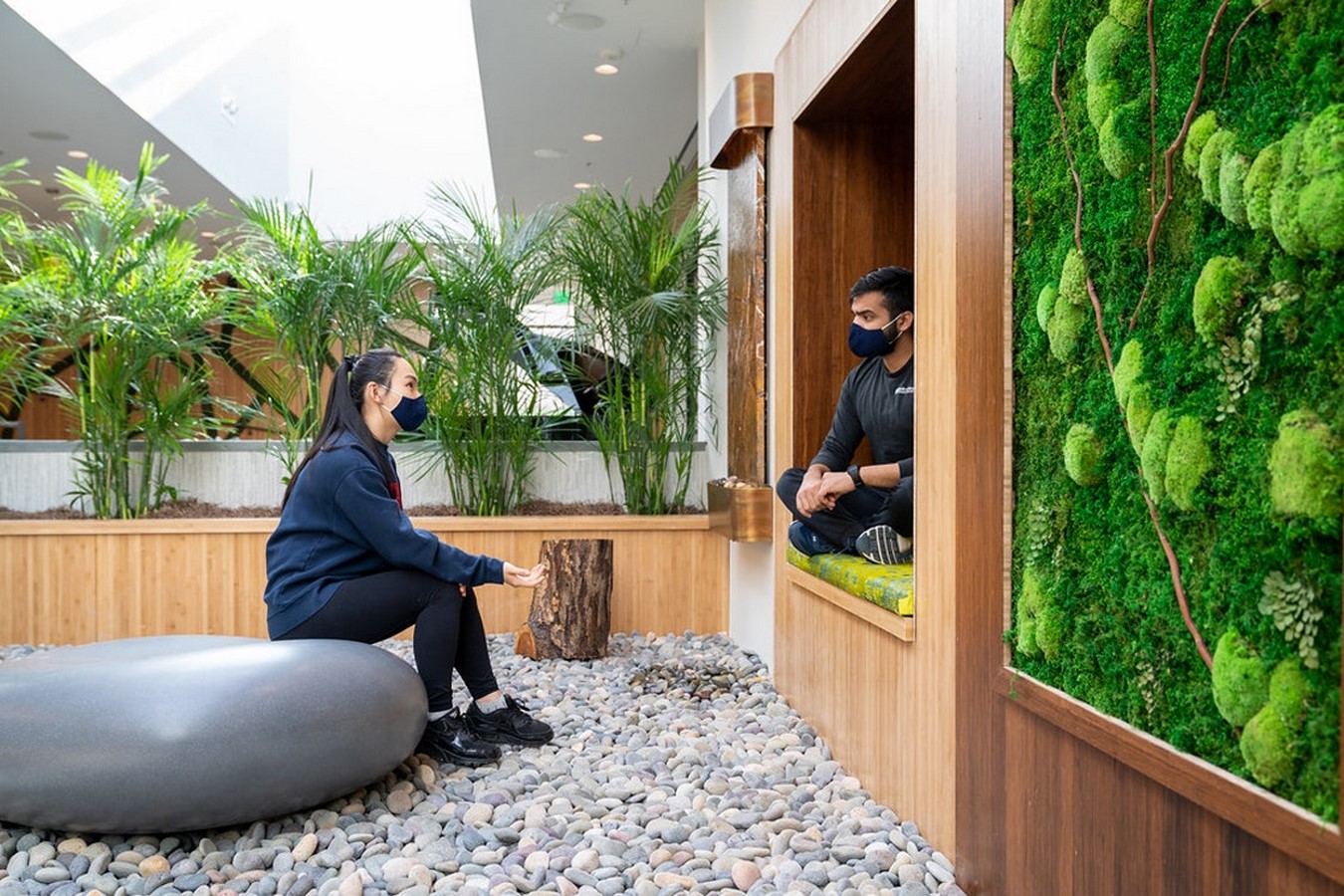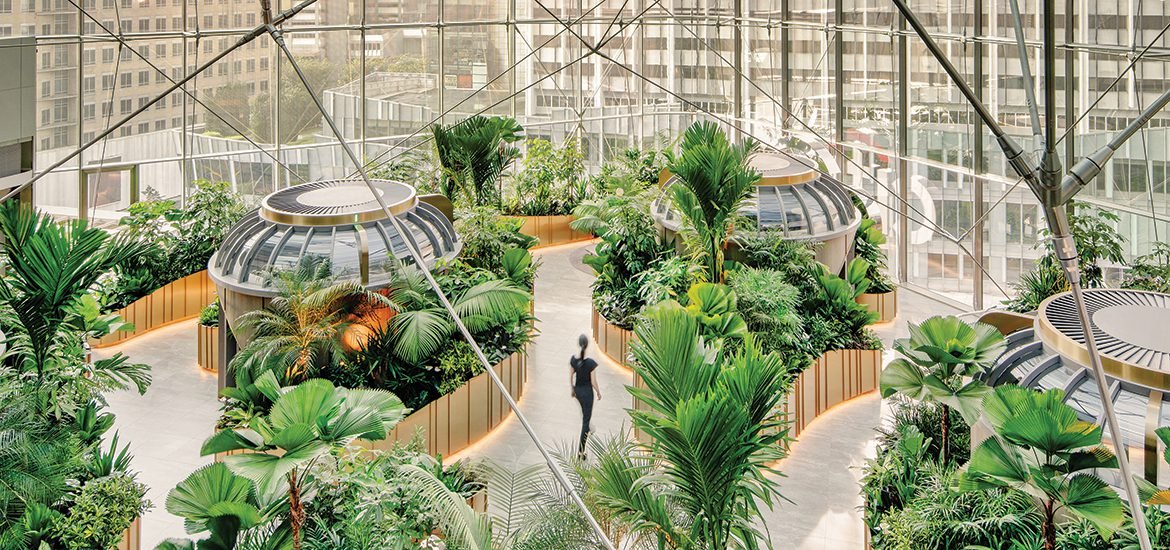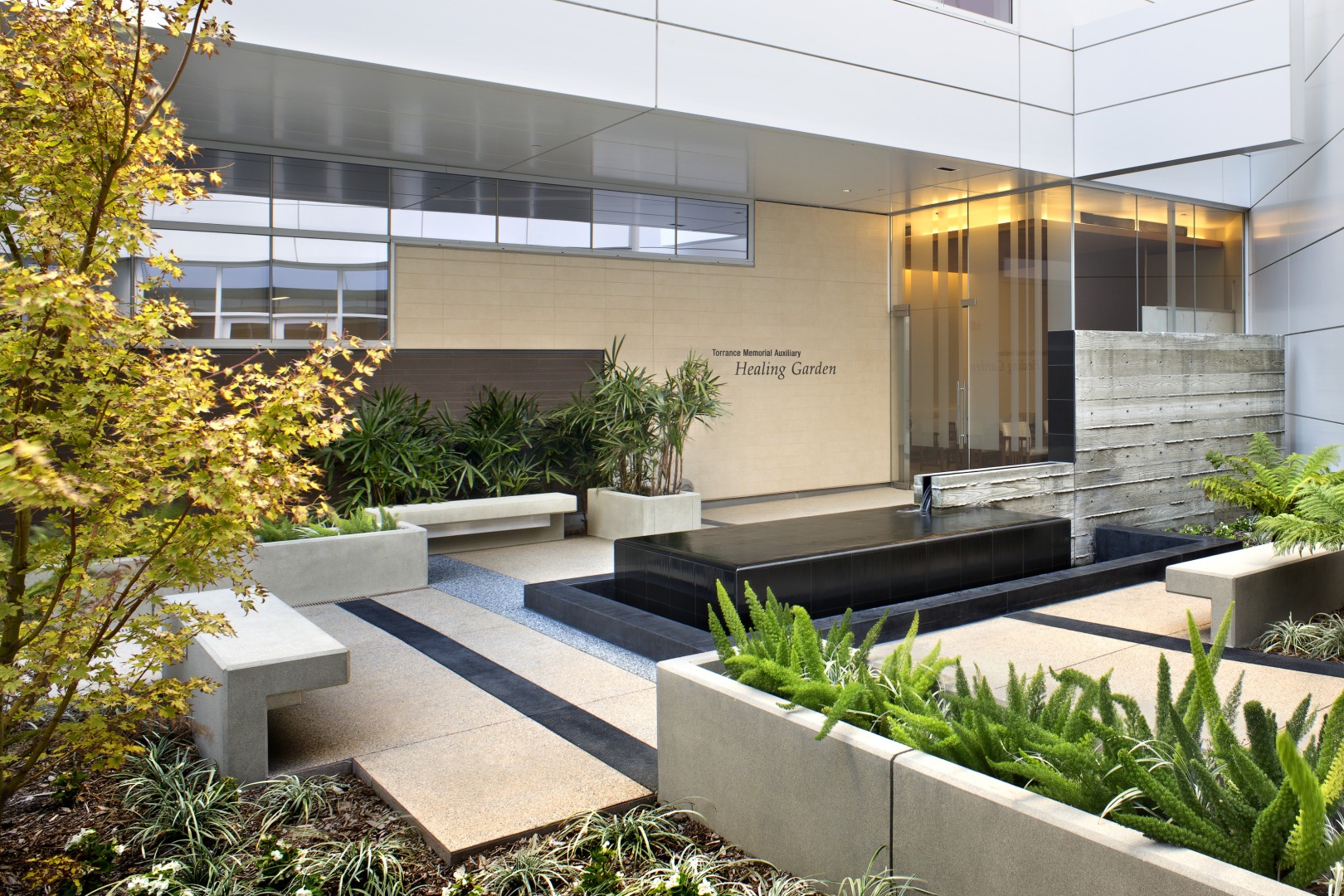Wellness Beyond Green Design - Enhancing Health And Well-Being Through Holistic Architecture
In the realm of architecture and design, a paradigm shift has occurred, transcending traditional approaches towards a more holistic perspective known as "Wellness Beyond Green Design." While green design focuses primarily on environmental sustainability, this new approach encompasses not only the well-being of the environment but also the physical, mental, and emotional health of the building's occupants.
Author:George EvansJul 31, 202322.9K Shares313.7K Views

In the realm of architecture and design, a paradigm shift has occurred, transcending traditional approaches towards a more holistic perspective known as "Wellness Beyond Green Design."
While green design focuses primarily on environmental sustainability, this new approach encompasses not only the well-being of the environment but also the physical, mental, and emotional health of the building's occupants.
Wellness architecture is one of the fastest-growing trends in the construction business. Many architects and planners consider wellness to be more of a home amenity that improves the quality of life.
Health and the environment go hand in hand and an architect can make a meaningful, positive effect in the wellness of the communities you serve by designing with the environment in mind.
Integrating elements that promote health and wellness, the innovative Wellness Beyond Green Design concept aims to create spaces that nourish and uplift the human experience.
Demand for building features that improve human comfort, encourage positive behaviors and hygiene, and support a "mind, body, spirit" approach is increasing in all building types, including office developments, classroom buildings, and municipal facilities.
The Evolution Of Green Design To Wellness
In the realm of architecture and design, a profound transformation has occurred over the years, moving beyond the traditional scope of Green Design to embrace a more holistic approach known as "Wellness Beyond Green Design."
While Green Design primarily focuses on environmental sustainability, Wellness Beyond Green Design encompasses not only the well-being of the environment but also the physical, mental, and emotional health of the building's occupants. This innovative concept marks a significant shift in the field, acknowledging that the built environment profoundly impacts human health and wellness.
The journey from Green Design to Wellness Beyond Green Design began as a response to pressing environmental concerns and the need to reduce the built environment's negative impact on the planet.
Architects and designers recognized the significance of incorporating sustainable materials, energy-efficient systems, and eco-friendly practices into their projects. By striving for greener buildings, the construction industry took a step towards mitigating environmental degradation and promoting ecological harmony.
However, as society evolved, it became evident that environmental sustainability alone was not sufficient to address the broader spectrum of human health and well-being.
Occupants of buildings spend a significant portion of their lives indoors, and the design of these spaces plays a pivotal role in shaping their experiences, emotions, and overall quality of life. With this realization, architects and designers began to expand their focus from solely ecological considerations to encompass human-centered design principles.
Biophilic Design - The Power Of Nature In Built Spaces
One of the key elements of Wellness Beyond Green Design is the integration of Biophilic Design. Biophilia refers to the innate human connection with nature, and Biophilic Design seeks to bring this connection into the built environment. By incorporating natural elements, patterns, and processes, architects aim to create spaces that foster a deep sense of connection and well-being.
The impact of Biophilic Design on human health and wellness has been widely researched and documented. Exposure to nature has been shown to have a range of positive effects on individuals, including reduced stress levels, improved cognitive function, increased creativity, and enhanced overall well-being. By bringing elements of nature indoors, such as indoor plants, natural materials, and access to views of green spaces, Biophilic Design helps create spaces that support physical health and mental clarity.
Optimizing Air And Light Quality
In the pursuit of Wellness Beyond Green Design, architects and designers place significant emphasis on optimizing air and light quality within buildings. The quality of the indoor environment has a profound impact on the health and well-being of occupants, influencing their physical health, mental clarity, and overall productivity.
By prioritizing air and light quality, design professionals aim to create spaces that not only promote environmental sustainability but also foster healthier and more vibrant living and working environments.
Clean and fresh indoor air is crucial for the well-being of building occupants. Poor indoor air quality, often caused by pollutants, allergens, and volatile organic compounds (VOCs), can lead to various health issues such as respiratory problems, allergies, and reduced cognitive function. To optimize air quality, architects employ several strategies:
- Effective Ventilation Systems- Proper ventilation systems are essential to circulate fresh air and remove indoor pollutants. Mechanical ventilation systems with air filters help ensure a continuous supply of clean air, particularly in buildings with limited natural ventilation.
- Low VOC Materials -Selecting low VOC materials, such as paints, adhesives, and furnishings, reduces the emission of harmful chemicals into the indoor air, enhancing overall air quality.
- Natural Air Purification- Biophilic design elements, such as indoor plants, contribute to natural air purification, filtering out toxins and pollutants while increasing oxygen levels.
Natural light has a profound impact on human health and well-being. Exposure to natural daylight is essential for regulating the body's circadian rhythm, improving mood, and enhancing productivity. To optimize light quality, architects employ the following strategies:
- Daylighting Design- Daylighting design involves strategically positioning windows, skylights, and light wells to maximize the entry of natural light into the building. This not only reduces the need for artificial lighting during the day but also creates a more pleasant and uplifting indoor environment.
- Glazing and Shading Solutions- High-performance glazing with low solar heat gain and shading devices helps control the amount of daylight and heat entering the building, preventing glare and overheating.
- Lighting Control Systems- Automated lighting control systems adjust artificial lighting levels based on the availability of natural daylight, ensuring an optimal balance of natural and artificial lighting throughout the day.
Promoting Physical Activity And Movement - Designing For Active Lifestyles
Incorporating opportunities for physical activity and movement is a fundamental principle of Wellness Beyond Green Design.
Recognizing the importance of an active lifestyle for overall health and well-being, architects strive to create environments that encourage and facilitate physical activity:
- Accessible Staircases- Designers prioritize accessible and aesthetically pleasing staircases to encourage occupants to choose stairs over elevators. Inspirational stair designs with natural light and visual interest make stair climbing an appealing option.
- Active Outdoor Spaces- Designing outdoor spaces that encourage physical activity is crucial. Fitness stations, walking paths, and recreational areas promote an active lifestyle and provide opportunities for relaxation and exercise in natural surroundings.
- Workplace Wellness-In commercial settings, architects create offices that support employee well-being by incorporating standing desks, flexible workstations, and ergonomic furniture to encourage movement throughout the workday.
Mindful Use Of Materials And Finishes
In the journey towards Wellness Beyond Green Design, the selection of materials and finishes plays a pivotal role in shaping the interior environment.
Mindful choices of materials not only contribute to sustainable practices but also significantly impact the well-being and comfort of building occupants. By considering the physical, sensory, and emotional aspects of materials, architects and designers can create spaces that promote relaxation, mindfulness, and overall human flourishing.
One of the primary objectives of mindful material selection is to prioritize sustainability and reduce the environmental impact of the building. Choosing renewable and recycled materials helps conserve natural resources and minimizes waste.
Additionally, opting for low-VOC (volatile organic compounds) or VOC-free materials ensures better indoor air quality, reducing exposure to harmful chemicals and promoting respiratory health.
Integrating biophilic materials into interior design is another key aspect of mindful material use. These materials evoke the essence of nature, fostering a deep connection with the natural world and promoting a sense of calm and well-being. For example, incorporating natural wood finishes, stone textures, or natural fibers can create a serene and welcoming ambiance that resonates with our innate biophilia.
Mindful material selection also considers the sensory experience of occupants. The tactile qualities of materials, such as soft fabrics, smooth surfaces, or rough textures, contribute to a more intimate and comforting environment. Aesthetically pleasing materials enhance visual appeal and evoke positive emotions, contributing to a sense of joy and contentment.
Acoustic Comfort And Stress Reduction - The Power Of Tranquility
Creating a peaceful and stress-free interior environment is a vital aspect of Wellness Beyond Green Design. Acoustic comfort addresses the impact of noise and sound on human health and well-being, recognizing that unwanted noise can be a significant source of stress and distraction for occupants.
Incorporating sound-absorbing materials and strategic design elements helps control noise levels within a space. For example, acoustic panels, baffles, and wall coverings can mitigate sound reverberation, creating a more serene and focused atmosphere.
In open-plan offices or shared spaces, thoughtful layout design can help delineate quieter zones from more active areas, ensuring that occupants have access to spaces that suit their individual needs and preferences.
In certain settings, such as healthcare facilities or offices, acoustic comfort is closely linked to privacyand confidentiality. Soundproofing walls and partitions can safeguard sensitive conversations and patient interactions, promoting a sense of trust and security.
Incorporating nature-inspired sounds, such as gentle flowing water or birdsong, can also enhance acoustic comfort and foster a tranquil ambiance. These sounds have a soothing effect on occupants, reducing stress levels and promoting relaxation and focus.
People Also Ask
What Is "Wellness Beyond Green Design" In Architecture?
"Wellness Beyond Green Design" is an innovative approach in architecture that goes beyond environmental sustainability. It focuses on creating spaces that promote not only the well-being of the environment but also the physical, mental, and emotional health of building occupants.
How Does Biophilic Design Impact Wellness In Buildings?
Biophilic design, which incorporates natural elements into buildings, positively impacts wellness by fostering a deeper connection with nature. It can reduce stress levels, improve mood, and enhance cognitive function among occupants.
What Are Some Key Principles Of "Wellness Beyond Green Design"?
Key principles of "Wellness Beyond Green Design" include optimizing air and light quality, promoting physical activity and movement, using non-toxic and sustainable materials, embracing technology for well-being, and creating acoustic comfort to reduce stress.
What Are The Benefits Of Implementing "Wellness Beyond Green Design" In Buildings?
Implementing "Wellness Beyond Green Design" principles in buildings leads to higher occupant satisfaction, increased productivity, and improved overall well-being. It can also result in reduced absenteeism, higher employee retention, and enhanced rental and resale values.
How Does Technology Contribute To "Wellness Beyond Green Design"?
Technology supports "Wellness Beyond Green Design" by regulating indoor air quality, temperature, and lighting for optimal living conditions. It also enables monitoring and analysis of the impact of design decisions on human health, facilitating continuous improvement in wellness-focused strategies.
Conclusion
Wellness Beyond Green Design represents a transformative shift in the field of architecture and design. By embracing a holistic approach that addresses the physical, mental, and emotional well-being of building occupants, architects create spaces that uplift and nurture the human experience.
Biophilic design, optimal air and light quality, and promoting physical activity are just some of the principles guiding this transformative movement. Embracing technology and mindful material choices further enhance the wellness-focused design process.
As the connection between the built environment and human health becomes increasingly apparent, Wellness Beyond Green Design will continue to shape the future of architecture, creating spaces that foster wellness, vitality, and flourishing for all.
Jump to
The Evolution Of Green Design To Wellness
Biophilic Design - The Power Of Nature In Built Spaces
Optimizing Air And Light Quality
Promoting Physical Activity And Movement - Designing For Active Lifestyles
Mindful Use Of Materials And Finishes
Acoustic Comfort And Stress Reduction - The Power Of Tranquility
People Also Ask
Conclusion

George Evans
Author
George Anderson, an exceptional architectural designer, envisions and brings to life structures that transcend the realm of imagination. With an unwavering passion for design and an innate eye for detail, George seamlessly blends form and function, creating immersive spaces that inspire awe.
Driven by a deep appreciation for the interplay of space, light, and materials, George's innovative approach redefines the possibilities of architectural design. His visionary compositions leave an indelible mark, evoking a sense of wonder and transforming the built environment.
George Anderson's transformative designs and unwavering dedication continue to shape the architectural landscape, pushing the boundaries of what is possible and inspiring generations to come.
Latest Articles
Popular Articles


